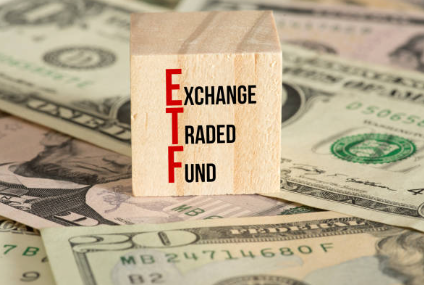Mutual Funds vs. ETFs: Which is Better for Your Investment Portfolio?
INVESTMENT STRATEGIES
9 min read


Introduction to Investment Vehicles
Investment vehicles serve as essential tools for individuals looking to grow their wealth and secure their financial future. Among the myriad options available, mutual funds and exchange-traded funds (ETFs) have gained significant popularity in recent years due to their unique characteristics and services they provide to investors. Understanding these investment vehicles is crucial for making informed financial decisions.
Mutual funds are pooled investment vehicles that aggregate capital from multiple investors to purchase a diversified portfolio of stocks, bonds, or other securities. Managed by professional portfolio managers, mutual funds allow investors to access a wide range of assets, divided into different categories based on investment objectives. They are particularly appealing to individual investors who prefer a hands-off approach, benefiting from the expertise of professionals who actively manage the fund's investments.
On the other hand, ETFs operate similarly to mutual funds but have distinct features that set them apart. ETFs are traded on stock exchanges like individual stocks, allowing investors to buy and sell shares throughout the trading day at market prices. This provides greater liquidity and flexibility compared to mutual funds, which are typically bought and sold at the end of the trading day at the fund's net asset value (NAV). Additionally, ETFs often boast lower expense ratios, appealing to cost-conscious investors seeking to maximize their returns.
The significance of these investment vehicles cannot be understated. They cater to a diverse range of investors, from those seeking long-term growth to those focused on short-term trading strategies. As individuals navigate their investment journeys, understanding the fundamental differences between mutual funds and ETFs will enable them to align their portfolios with their financial goals and risk tolerance effectively. By examining the benefits and limitations of each, investors can make educated choices that may well shape their financial futures.
Understanding Mutual Funds
Mutual funds are investment vehicles that pool capital from multiple investors to purchase a diversified portfolio of stocks, bonds, or other securities. Each investor buys shares in the mutual fund, which represents a portion of the entire portfolio. This structure allows individuals to gain exposure to a wide variety of assets, usually managed by professional fund managers. Investors have several types of mutual funds to choose from, including equity funds, bond funds, and money market funds, catering to different financial objectives and risk tolerances.
Equity mutual funds primarily invest in stocks, typically aiming for capital appreciation over the long term. In contrast, bond funds focus on fixed-income securities such as government or corporate bonds and are generally seen as less risky than equity investments. Money market funds, composed of short-term debt instruments, offer stability and liquidity, making them a low-risk investment option often used for cash management.
Investing in mutual funds generally involves purchasing shares directly from the fund or through a financial advisor. These shares can be bought at the current net asset value (NAV), which is determined at the end of each trading day. Mutual funds can be managed in two primary styles: active and passive. Active management involves fund managers making investment decisions to outperform the market, while passive management seeks to replicate the performance of a specific index.
However, mutual funds come with specific fees and expense ratios, which can impact overall returns. The expense ratio encompasses management fees, operational costs, and other expenses, typically expressed as a percentage of assets under management. While mutual funds offer various benefits, such as diversification and professional management, they may also entail drawbacks, including fees that can diminish investor profits and potential capital gains distributions during the year.
What are ETFs?
Exchange-Traded Funds (ETFs) are investment funds that are traded on stock exchanges, similar to individual stocks. They hold a diversified portfolio of assets, which can include stocks, bonds, commodities, or other securities. One of the primary distinctions between ETFs and traditional mutual funds is that ETFs are bought and sold throughout the trading day at fluctuating market prices. This provides investors with a level of flexibility that is often not available with mutual funds, which are typically traded at the end of the trading day at their net asset value (NAV).
ETFs come in various types to cater to different investment strategies and risk appetites. Index ETFs aim to replicate the performance of a specific index, such as the S&P 500, while sector ETFs focus on specific industries like technology, healthcare, or energy. There are also bond ETFs, commodity ETFs, and actively managed ETFs that seek to outperform a benchmark index. This variety allows investors to tailor their investment portfolio according to their individual financial goals and market outlook.
Management styles of ETFs can be categorized into passively managed and actively managed funds. Passive ETFs typically aim for long-term performance aligned with a specific index, while actively managed ETFs involve managers making decisions about the fund’s asset allocation and security selection to achieve better returns. Furthermore, investing in ETFs usually entails lower expense ratios compared to mutual funds, although fees can vary widely based on the fund manager and the complexity of the ETF itself.
Tax efficiency is another major advantage of ETFs. Due to their unique structure, ETFs generally incur fewer capital gains taxes than traditional mutual funds, making them an appealing option for investors looking to minimize their tax liabilities. However, like any investment vehicle, ETFs come with their own set of risks and drawbacks, including potential trading costs and market volatility, which investors should be aware of before committing their capital.
Key Differences Between Mutual Funds and ETFs
When considering investment options, it is essential to understand the key differences between mutual funds and exchange-traded funds (ETFs). These two types of investment vehicles serve similar purposes in providing diversified exposure to a range of asset classes, but they differ significantly in terms of structure, functionality, and strategies.
One of the primary distinctions lies in their trading methods. Mutual funds are typically traded once a day at the end of the trading session, with prices determined based on the net asset value (NAV) of the fund. In contrast, ETFs are traded throughout the day on stock exchanges, much like individual stocks. This allows investors to buy or sell shares at market prices, which can fluctuate based on supply and demand, offering greater liquidity compared to mutual funds.
Fees associated with mutual funds and ETFs also differ. Mutual funds often have higher expense ratios and may include sales loads or commissions when purchased through a broker. Conversely, ETFs tend to have lower expense ratios; however, investors may still incur brokerage fees when buying or selling shares. It is crucial for investors to consider these costs, as they can significantly impact overall returns.
Tax implications present another important contrast. Mutual fund investors may face capital gains distributions, which are taxable events that occur when the fund manager buys or sells securities within the fund. ETFs, on the other hand, generally exhibit tax efficiency due to their unique structure, which allows for in-kind redemptions that can limit taxable gains. This characteristic is particularly beneficial for long-term investors looking to minimize their tax burden.
Moreover, the minimum investment requirements vary. Many mutual funds have minimum investment thresholds that can range from hundreds to thousands of dollars, making them less accessible to some investors. ETFs, however, can often be purchased for the price of a single share, thus providing greater flexibility for individuals with limited capital.
Finally, transparency and the disclosure of holdings differ between these two investment vehicles. ETFs typically disclose their holdings daily, allowing investors to see exactly what they own at any given moment. In contrast, mutual funds are usually required to report holdings quarterly, which can make it more challenging for investors to track their investments in real-time. Understanding these key differences is essential for investors as they strive to determine which option aligns best with their investment goals.
Performance Comparison: Which Performs Better?
When evaluating the performance of mutual funds and exchange-traded funds (ETFs), several key factors play a crucial role, including volatility, long-term returns, and management fees. Both investment vehicles offer unique benefits; however, their performance can vary significantly based on these elements.
Historically, research indicates that mutual funds may exhibit higher volatility compared to ETFs. This is primarily attributable to the active management style of most mutual funds, which involves selecting stocks based on research and predictions of future market conditions. In contrast, ETFs often passively track a specific index, which tends to provide a more stable investment profile. This stability can be attractive for investors seeking lower risk. Significant volatility in mutual funds can lead to unpredictable returns, particularly in turbulent market conditions.
In terms of long-term returns, studies generally reveal that ETFs tend to outperform mutual funds over extended investment horizons. One factor contributing to this performance gap is management fees. Mutual funds usually carry higher fee structures, including management and operational fees, which can erode investors' returns over time. According to various financial analyses, the average expense ratio for mutual funds can surpass 1%, whereas ETFs often have expense ratios that are considerably lower, often around 0.5% or less. These lower fees enhance net returns for ETF investors, allowing for better compounding over time.
Furthermore, the tax efficiency of ETFs adds another layer to their appeal. Because mutual funds typically trigger capital gains taxes during distribution, this can take a toll on net returns. In contrast, the structure of ETFs allows investors to defer these taxes until they sell their shares, which may result in better after-tax performance.
While both mutual funds and ETFs have their merits, the historical performance data suggests that ETFs often provide better long-term returns with lower volatility and management fees. The choice ultimately depends on individual investment goals, risk tolerance, and investment styles.
Investing Preferences and Profiles
When considering whether to invest in mutual funds or ETFs, it is essential to evaluate individual investor profiles that encompass a range of factors, such as investment goals, risk tolerance, investment timeframe, and preferences for management style. These elements can significantly influence the decision-making process and the suitability of each investment vehicle.
For those whose primary investment goal is long-term growth and who have a high-risk tolerance, mutual funds may be an appealing option. Actively managed mutual funds can provide access to professional management, potentially resulting in higher returns through strategic asset allocation and stock selection. Investors who prefer a hands-off approach may be drawn to mutual funds, as they often require less frequent monitoring compared to their ETF counterparts.
In contrast, ETFs may be more suitable for investors seeking flexibility and lower expense ratios. Those who are comfortable with self-management and have a moderate to low-risk tolerance may find ETFs advantageous because they can be traded throughout the day like stocks, allowing for greater control over entry and exit points. Additionally, individuals on a tighter budget might appreciate the lower minimum investment requirements typically associated with ETFs.
Moreover, the timeframe for investments plays a crucial role. For investors with a short-term horizon or those who frequently adjust their portfolios, the liquidity of ETFs may be more appealing. Conversely, long-term investors focused on building a retirement fund might lean towards mutual funds, as they may be less sensitive to short-term market fluctuations.
Ultimately, understanding one's investment goals, risk appetite, and preferences in management style can guide investors in deciding between mutual funds and ETFs, aligning their choice with broader financial objectives.
Making the Right Choice for Your Portfolio
In summarizing the key points from our discussion on mutual funds and ETFs, it is imperative to recognize the distinct characteristics that separate these two investment vehicles. Both mutual funds and exchange-traded funds (ETFs) offer unique advantages that can cater to different investor needs and financial strategies. For instance, mutual funds generally provide professional management and are well-suited for those who prefer a hands-off approach, often appealing to long-term investors focused on wealth accumulation through diversified holdings. Conversely, ETFs offer greater flexibility, lower expense ratios, and the ability to trade throughout the day like stocks, which can be advantageous for more active investors.
The strengths of mutual funds lie in their potential for professional guidance and greater variety in terms of investment strategies, which are beneficial for those seeking aligned financial objectives. However, they often come with higher fees and less transparency regarding holdings. On the other hand, while ETFs may be seen as cost-effective and tax-efficient investment tools, they require a level of attentiveness, especially when it comes to market timing and pricing fluctuations.
As you weigh the pros and cons of mutual funds versus ETFs for your investment portfolio, it is vital to consider your own financial goals, risk tolerance, and investment horizon. A thorough understanding of your individual circumstances will enable you to choose an investment method that best aligns with your objectives. Furthermore, exploring additional resources such as financial blogs, investment podcasts, or consulting with a financial advisor can provide further clarity. By equipping yourself with knowledge and awareness, you can make informed decisions that enhance your investment strategy and contribute to your financial well-being.












